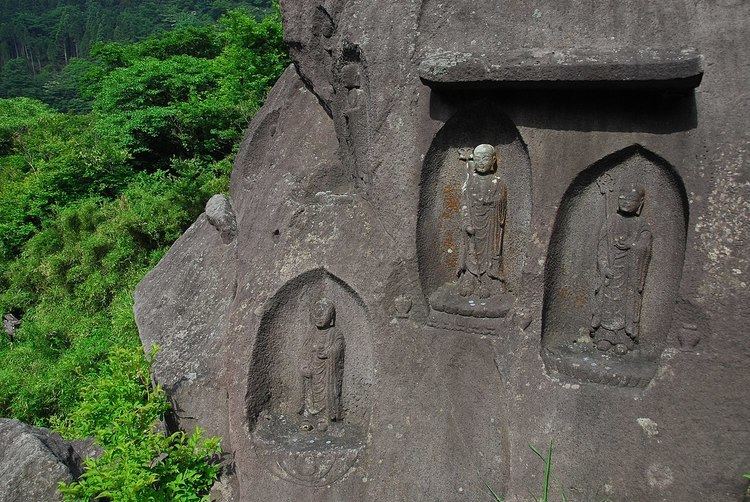 | ||
Moto-Hakone Stone Buddhas (元箱根石仏群, Moto-Hakone sekibutsu) is a grouping of stone sculptures and associated tō (pagodas), dating from the late Kamakura period and located in the former village of Moto-Hakone, now merged into the town of Hakone in Kanagawa Prefecture, Japan. The area has been designated an Historic Site and includes a number of Important Cultural Properties.
Contents
Location
The stone Buddhas are located within Fuji-Hakone-Izu National Park, near Shōjin pond (精進池) in the valley between Mount Futago (二子山) (1091 m) and Mount Kami (神山) (1438 m). They are situated a little to the north of the old Tōkaidō; the modern Japan National Route 1 cuts the site into two. Kamakura-period travellers and the poet Asukai Masaari likened the area to Hell; consequently the site became popular for dedications to Jizō Bosatsu.
Description
The stone sculptures comprise a 3.5 m seated Rokudō Jizō of 1300 (ICP); three Hitaki Jizō of 1311 (ICP), of which one measures 1.24 m and the other two are smaller; and twenty-five bosatsu (ICP), a group of twenty-six sculptures split into two by the road, of which twenty-four have been identified as Jizō and the twenty-sixth as Amida Nyorai, which measure between twenty centimetres and one metre, and which date between 1293 and 1313.
In addition to the stone sculptures there are in the vicinity a number of stone tō. Two gorintō date to the late Kamakura period and are known as the graves of the Soga Brothers; A third, with an inscription dating it to the twelfth month of Einin 3 (1295), marks the grave of Tora Gozen (虎御前). There are also two hōkyōintō, one (ICP) inscribed the fifth month of Einin 4 (1296) and the eighth month of Shōan 2 (1300), and popularly known as the grave of Minamoto no Mitsunaka; and the second dating to Kannō 1 (1350) and known as the grave of the Happyaku Bikuni.
